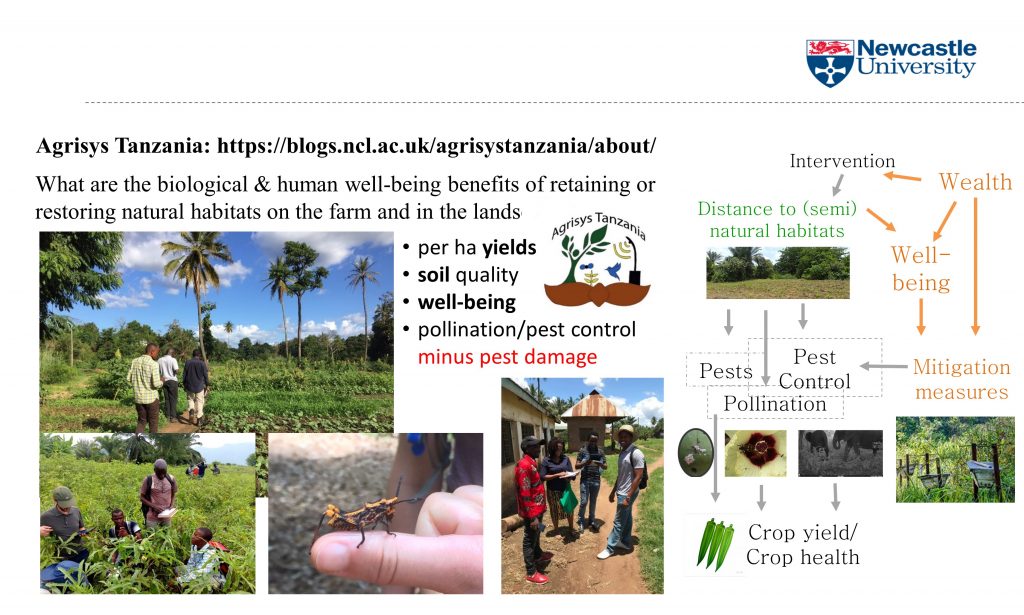
What to plant, when and where? – designing integrated forest-agricultural
landscapes to enhance multiple livelihood benefits to and from agriculture
Knowledge and data gaps: Integrated land management that exploits natural capital (e.g. natural and semi-natural habitats and their resources) for benefits to and from agriculture has been identified as a key component of sustainable agricultural intensification in Sub-Saharan Africa by academics and practitioners. Small-holder farmers traditionally recognise the benefits natural habitats can provide to agriculture. But research on underlying ‘best practice’ for improved crop yields is rare. Large knowledge gaps exist on the potential of natural capital for improving crop production whilst protecting biodiversity, clean water and resources such as timber, food, medicine and fuel. Data gaps are considerable on the biological mechanisms that underlie the benefits of natural capital for agriculture. Both knowledge and data gaps create perception challenges (‘how useful is natural capital and is it necessary?) and these in turn hinders the targeted uptake of integrated land management for agricultural intensification in small-holder and industrial farms.
Project aim: Our research fills these knowledge and data gaps combining social and ecological method advances to quantify how and to what extent integrated landscape management can enhance benefits to and from agriculture. Working with rural farmers, agribusiness, development and education practitioners, research organisations and government in Tanzania, we have been collecting and analysing ecological and socio-economic data from our study landscape in Tanzania to address four key objectives.
Objective 1 Investigate four key benefits provided by the study landscape.
Objective 2 Investigate the agronomic potential of natural capital for these benefits.
Objective 3 Validate sustainable intensification through natural capital accounting for biological and human well-being factors.
Objective 4 Contextualise agronomic potential of natural capital considering social and policy dimensions of land management and governance.

